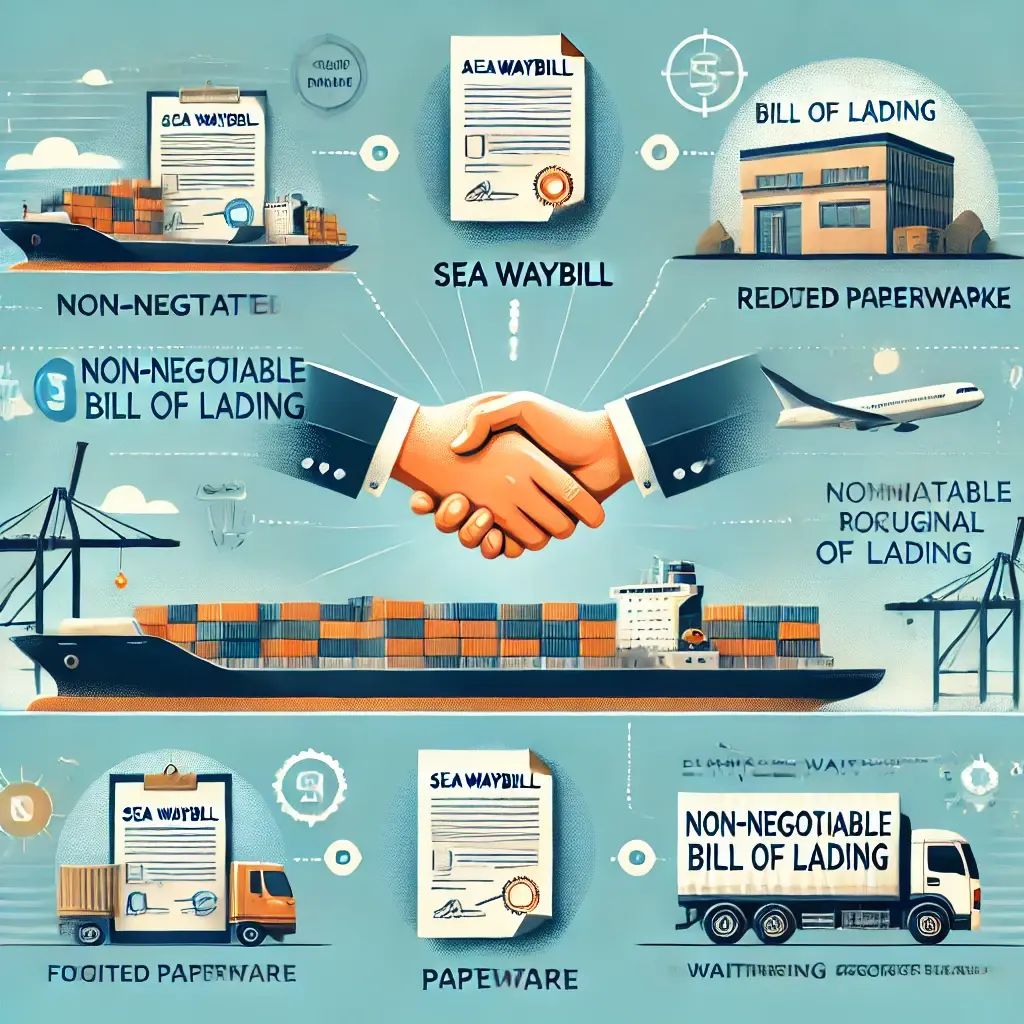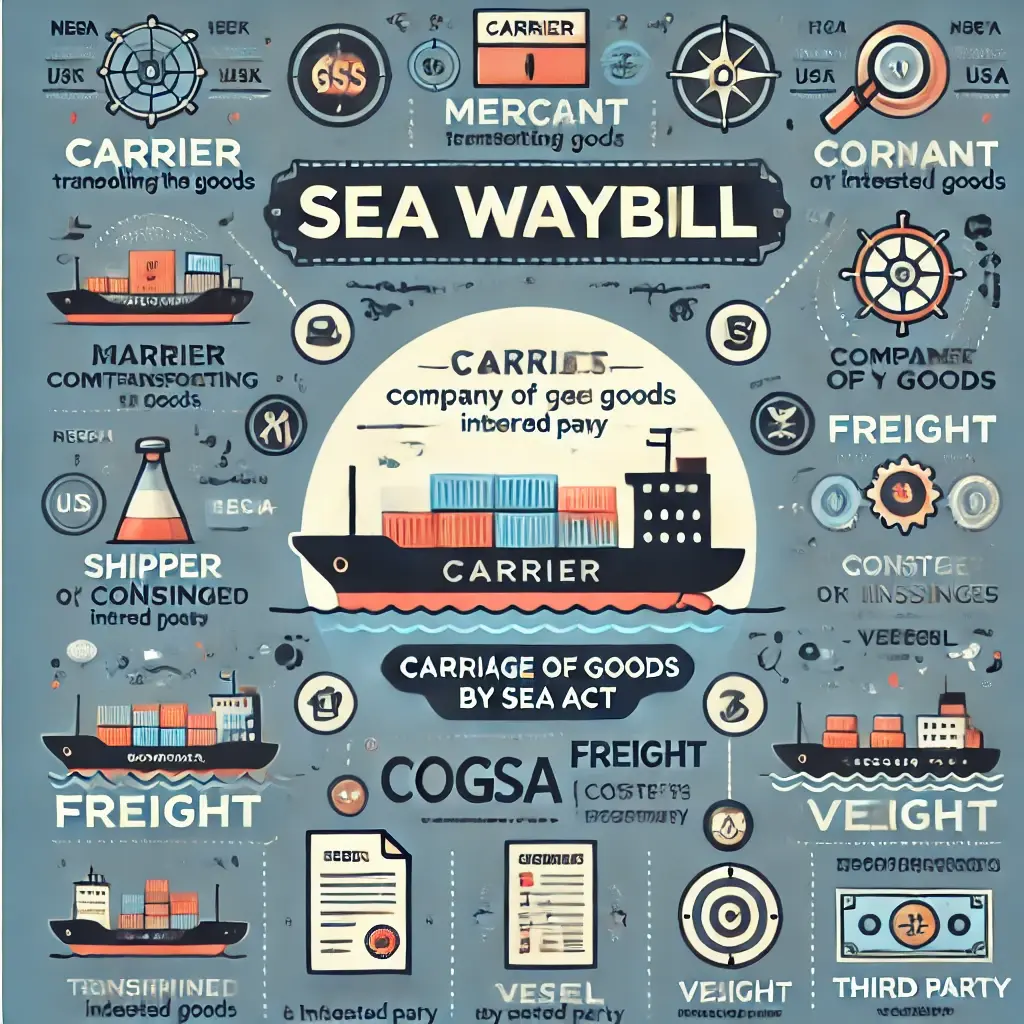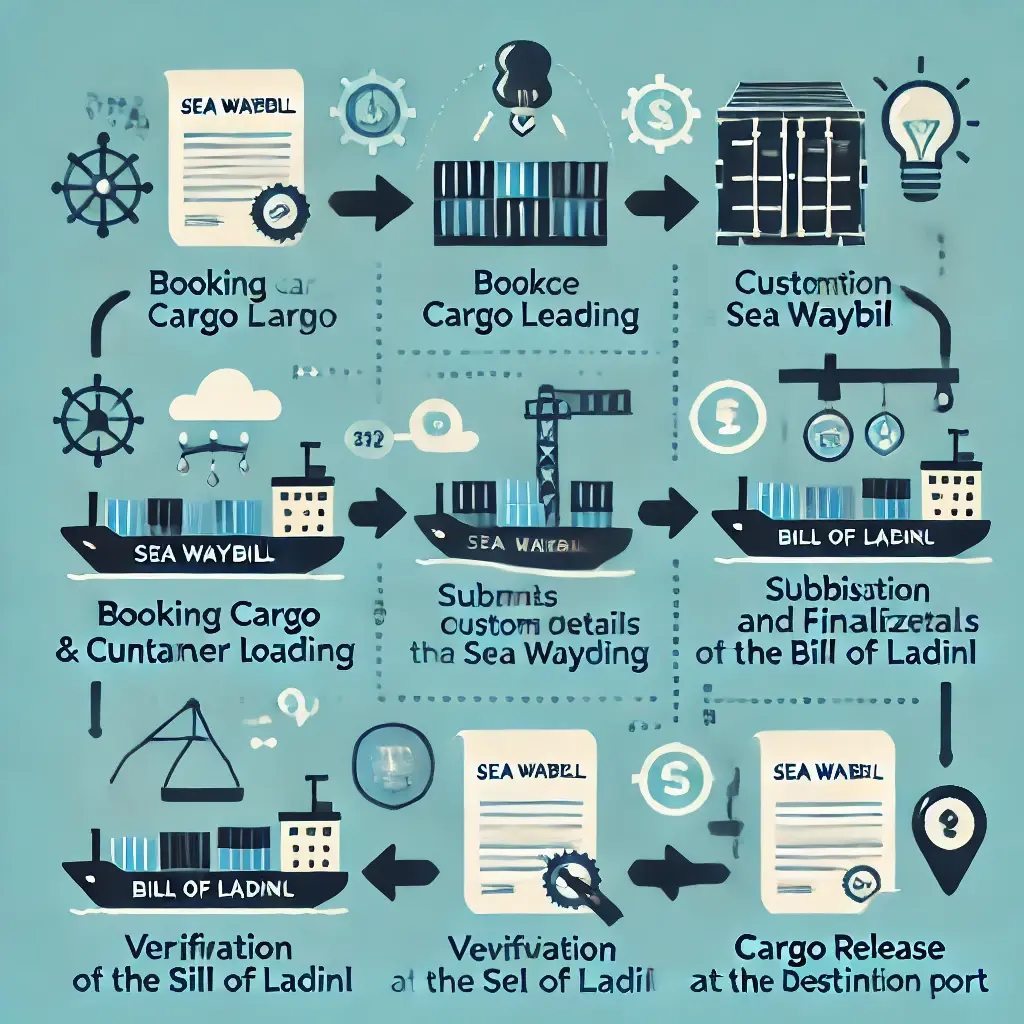Everything You Need to Know for Fast, Reliable, and Paperless Shipping
Key Highlights at a Glance:
| Term | Meaning | Importance |
|---|---|---|
| Sea Waybill | Non-negotiable contract of carriage and receipt of cargo | Faster release, no physical documents needed |
| Bill of Lading | Negotiable document of title | Ownership transfer, used for bank dealings |
| Carrier | The party responsible for shipping your goods | Ensures transport from origin to destination |
| Telex Release | Electronic notice that the original B/L is surrendered | Facilitates quick cargo release |
| Express Release | No hard-copy B/L issued at all | Simplifies shipping for trusted parties |
By the end of this guide, you’ll have a clear understanding of sea waybills and why they can help you ship your products more efficiently.
If you’re seeking a simpler, faster way to ship goods, you’ll love the sea waybill. It accelerates delivery, reduces paperwork, and eliminates the wait for original documents. Furthermore, it works perfectly when you trust your consignee or partner. You’ll soon see why many importers and exporters choose a non-negotiable sea waybill to streamline their logistics.

What Is a Sea Waybill?
In short, a sea waybill is a binding contract of carriage between you (the shipper) and the carrier. This crucial shipping document also serves as a receipt of cargo, yet it’s not a document of title. Because it’s non-negotiable, you can’t transfer ownership to a third party. As a result, you’ll avoid cumbersome paperwork, especially when you need a quick release of goods at the destination port.
Why it matters:
- You don’t have to send physical documents.
- You save time by removing the need for an original bill of lading.
- You rely on trust and an established relationship with your consignee.
Key Terms in Shipping Related to Sea Waybills
You’ll encounter various terms while using a sea waybill. Understanding them ensures smooth communication with freight forwarders and carriers:
- Carrier: The party agreeing to transport your goods.
- Merchant: Includes the shipper, consignee, or anyone who holds a stake in the cargo.
- COGSA: Stands for the Carriage of Goods by Sea Act in the United States.
- Freight: All shipping charges you pay to the carrier to move the goods.
- Vessel: The ship or feeder vessel that carries your cargo from one port to another.
- Third Party: Another carrier or entity that may handle your shipment during the transit process.
Using these terms correctly helps you collaborate with shipping companies and avoid misunderstandings.

Non-Negotiable Nature of the Sea Waybill
You might wonder what “non-negotiable” means for you. Essentially, you can’t endorse the sea waybill to anyone else. Because there’s no transfer of ownership, your consignee is the only one able to claim the shipment. This aspect makes the sea waybill an excellent choice for shipments between trusted partners.
Purpose and Uses of the Sea Waybill
You might prefer a sea waybill when:
- You trust your business partner.
- Speed is a priority.
- No immediate need exists for ownership transfers.
- You have short-distance or time-sensitive shipments.
A sea waybill is especially practical if you’re shipping within the same multinational company. It also suits cargo with low commercial value or when bank negotiations aren’t required.
The Reason for the Sea Waybill’s Existence
Modern communication systems made sea waybills more prevalent. You simply don’t need to wait for the physical arrival of an original bill of lading. Instead, you can finalize everything online or via email. This approach saves you valuable time and resources. Furthermore, faster delivery reduces the risk of cargo delays at the destination port.
Seaway Bill Process Overview
You’ll find the sea waybill process straightforward. Here’s how it typically flows:
- Book Your Shipment and pack your cargo in appropriate containers.
- Clear Customs or have your carrier handle clearance on your behalf.
- Submit Cargo Details to get a draft from the shipping company.
- Validate the Draft so the carrier can finalize the sea waybill.
- Release of Goods happens once you arrive at the destination port.
This sequence saves time and effort, letting you focus on other critical business tasks.

Contents of a Sea Waybill
When filling out a sea waybill, ensure accuracy in the following fields:
- Consignee name and shipper name
- Carrier name
- Place of receipt and port of discharge
- Detailed cargo description (type, quantity, and quality)
- Container details (weight, measurements, and volume)
- Freight charges and any insurance details, if applicable
Correct details ensure no delays at customs or other checkpoints.
Advantages and Disadvantages of a Sea Waybill
Advantages
- Immediate Cargo Release: You won’t need the original bill of lading.
- Less Paperwork: Everything can be done digitally.
- Cost-Effective: Saves on courier fees and time.
- Secure Yet Simple: Non-negotiable nature prevents unauthorized transfers.
Disadvantages
- Limited Transfer Options: You can’t negotiate or transfer title.
- Less Suitable for Complex Supply Chains: Some banks may refuse a sea waybill in certain transactions.
- Trust Is Essential: Without a strong partnership, you might face disputes or payment issues.
Difference Between a Sea Waybill and a Bill of Lading
Many newcomers confuse these documents. Here’s the simple breakdown:
Bill of Lading (B/L):
- Negotiable, acts as a document of title.
- Allows ownership transfer to third parties.
- Requires the original B/L at the destination to release cargo.
Sea Waybill:
- Non-negotiable, not a title document.
- No physical originals needed for releasing cargo.
- Best for trusted relationships and quick deliveries.
You’ll likely use a bill of lading if a bank or third party needs to hold title, while a sea waybill suits simpler transactions.
Telex Release vs. Express Release
Telex Release is a message confirming the surrender of the original bill of lading. This allows the carrier’s agent at the destination to release your cargo without the physical B/L.
Express Release means no hard-copy bill of lading exists at all. By issuing a sea waybill, you bypass printing and physical delivery, speeding up every step of your supply chain.
Additional Shipping Documents
Sometimes, you’ll encounter:
- Ocean Bill of Lading: A negotiable document used in international trade.
- Memo Bill of Lading: A non-negotiable receipt resembling a sea waybill, but rarely used in standard transactions.
Each document caters to different shipping scenarios, so ask your freight forwarder which suits your business best.
Frequently Asked Questions About Sea Waybills
Q1: Can I use both a sea waybill and a bill of lading for the same shipment?
No, you must stick with one document per shipment.
Q2: When do I use an express bill of lading?
Use it when you trust your buyer, and no bank negotiation is needed.
Q3: Can I ship frozen goods under a sea waybill?
Yes, but you must alert the freight forwarder and ensure a refrigerated container is available.
Q4: How can I manage an email release for my cargo?
You must surrender the original bill of lading and present a letter of intent at the discharge port if using a standard B/L. If using a sea waybill, there’s no original to surrender.
Q5: What is a surrender bill of lading?
It’s a document where the exporter relinquishes title rights, allowing the importer to claim the goods.
Conclusion
Ultimately, a sea waybill offers a swift, paperless, and non-negotiable solution for trusted shipping partners. If you prioritize speed, reduced documentation, and a straightforward cargo release, then the sea waybill is your ideal choice. However, remember to confirm that you truly don’t need the negotiable features of a standard bill of lading. By selecting the document that best fits your business model, you’ll protect your shipments and maintain a smooth supply chain.
If you still have any questions about sea waybills or shipping documents, feel free to contact your carrier or freight forwarder for expert advice. This approach ensures you stay compliant, cost-effective, and prepared for any challenges in the fast-paced world of global trade.


